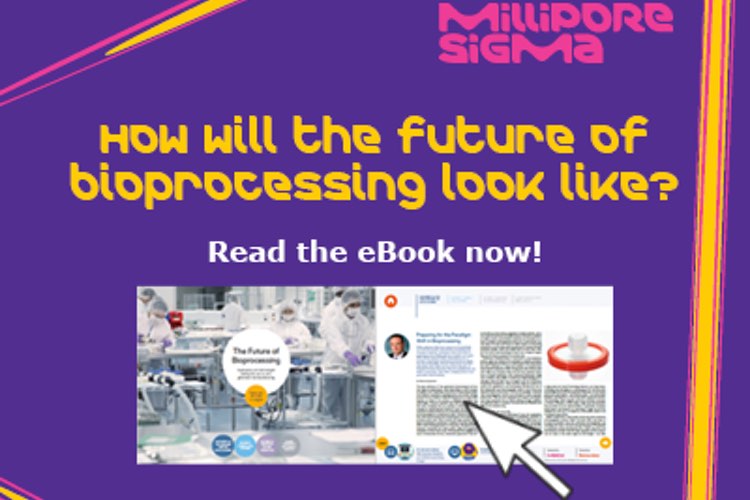The exact definition of “next-generation bioprocessing” and how that might be implemented varies depending on which company you speak to, but it essentially comes down to improving processes. I believe it represents a paradigm shift in the industry.
Biologic products are not simple to make and biopharma is a conservative industry, so there is not always a willingness to adopt new technologies. However, upstream titers have improved so much that many companies are now looking to embrace change; for example, by retrofitting their facilities to cope with the increased quantities of antibody that they are producing upstream.
Some are producing kilograms of antibody per batch, whereas ten years ago they were only producing a few hundred grams; most downstream processes simply aren’t built to handle such large quantities, which leads to bottlenecks in purification.
Companies are now looking to embrace change
In addition to process challenges, there is also increasing pressure on drug costs, with governments, insurance companies and other payers calling for biopharma companies to lower their prices. One example that highlights the issue is Ocrelizumab (Ocrevus, Genentech), approved in May 2017 by the FDA to treat primary progressive multiple sclerosis, with a cost of $65,000 per year.
Such high prices put tremendous pressure on health systems, and therefore treatments are discussed not in terms of disease-modifying performance, but in improvement over cost ratios. My team and I have no direct impact on the pricing process but we can at least help manufacturers to develop the best processes possible, which may enable them to lower costs. After all, if you want to sell something at a lower cost, it stands to reason that you first have to produce it at a lower cost.
Continuous manufacturing is a buzzword in the biopharma industry right now because of its potential to intensify processes. By compressing the process into a small footprint that still produces the same quantities as large-scale facilities, you benefit from lower upfront investment, lower running costs, and shorter build time.
Right now, however, there are still many questions about how to actually implement a fully continuous bioprocess. Single-use is certainly a key enabler of continuous bioprocessing, and in upstream there has been a lot of progress with the introduction of perfusion bioreactors.

There are also single-use options for certain unit operations in the downstream process, but one of the missing links was chromatography, which is one of the most expensive steps of the process.
In the current paradigm, traditional resin chromatography columns are oversized to match upstream productivity. They are very expensive and require amortisation over many production lots, as well as cleaning, storage, validation and significant labour to operate. And they also omit flexibility and agility in manufacturing.
Forging the way with technology
So how does the Natrix technology fit into next-generation bioprocessing? Merck is committed to establishing a portfolio of next-generation bioprocessing technologies that enable faster and more efficient biomanufacturing – and one of these technologies is the Natrix Membrane.
The Natrix platform is not the only chromatography option on the market, but our product is unique in that it offers extremely high productivity. Indeed, where other chromatography technologies provide either high binding capacity or high speed, the Natrix technology features a very high density of binding sites throughout a macroporous 3D structure that provides high productivity, simultaneously.
Effectively, you can achieve production-scale capacity—and maintain quality—in a much smaller footprint, allowing you to move away from traditional columns. The technology, which originally came from McMaster University in Ontario (Canada), is made using a single-step polymerisation that provides lot-to-lot reproducibility to guarantee consistent performance. And because our technology is single-use and fully validated for GMP use, it is treated as a consumable, ready to use in a plug-and-play format.
Before I joined Natrix, I had actually worked with other membrane chromatographic products. Back in early 2000, when fears of an avian flu pandemic were rife, membrane chromatography was considered by many to be the holy grail because of its potential to accelerate vaccine development, but it didn’t take off at the time because we didn’t have the right capacities and the industry was not ready to fully adopt single-use technologies. I was really disappointed at the time, but today things are very different—intensified upstream processes deliver large quantities of biologics and patients are waiting: it is time to address the downstream bottlenecks!
Membrane chromatography was considered by many to be the holy grail because of its potential to accelerate vaccine development
The acquisition by Merck has greatly increased the visibility and attractiveness of our technology. Natrix Separations, Inc. is not a small company anymore – it is part of a large, well- established organisation that is a leader in purification.
I recently gave a presentation at an international, scientific conference and people congratulated me on the deal with Merck, with one individual telling me that they had been investigating the Natrix technology for some time, but were concerned about the risks of us being a smaller company. Now that we are part of a bigger company, they are happy to move forward because we have provided them with the real solution to address their challenges in therapeutic supplies!
Despite biopharma being a conservative industry, I am seeing a lot of positive activity that implies a willingness to embrace next-generation bioprocessing. I am editing a book right now called New Paradigms in Biomanufacturing, but the outline keeps changing because my partners worldwide are making progress so fast! It is really encouraging and shows how much momentum there is around this topic.
And coming up next...
The work at Natrix is by no means complete – we are currently developing the second generation of our membranes that will benefit from the addition of affinity ligands. Click here to find out more on what is next in bioprocessing.
N.B. Renaud Jacquemart was former Director of Vaccines Process Sciences at Merck, Burlington, Ontario, Canada.




